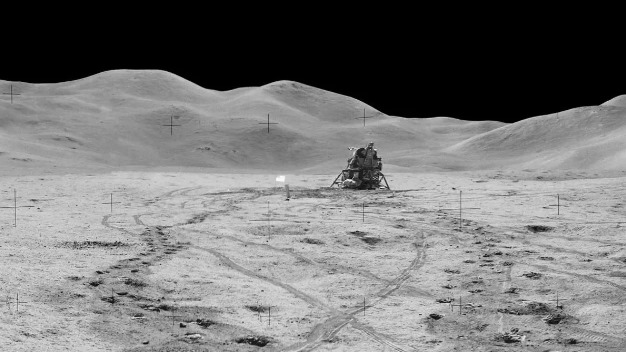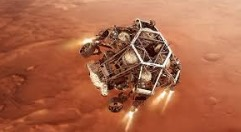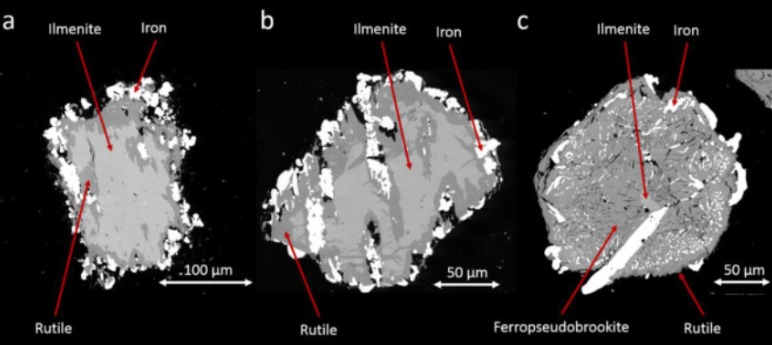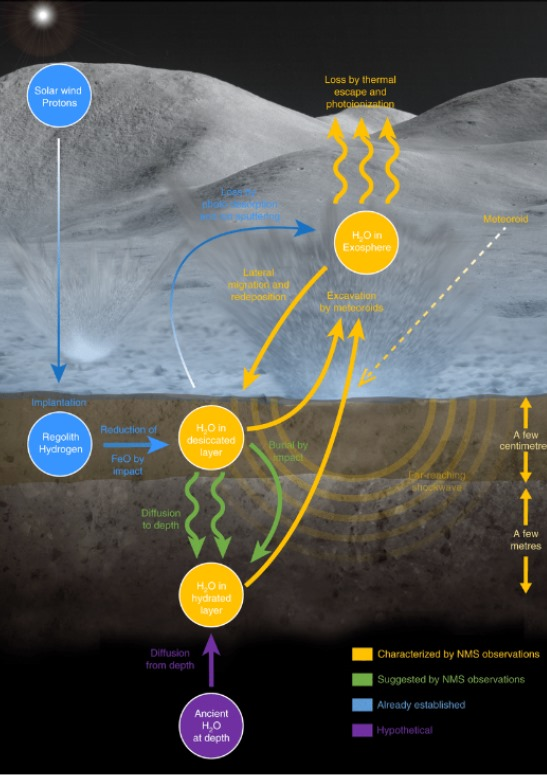THE IMPLEMENTATION OF IN-SITU RESOURCE UTILIZATION
Manasvi Kommuri • 2024-09-10
𝙄𝙣𝙨𝙩𝙞𝙩𝙪𝙩𝙚 - 𝙃𝙚𝙣𝙧𝙞𝙚𝙩𝙩𝙖 𝘽𝙖𝙧𝙣𝙚𝙩𝙩 𝙎𝙘𝙝𝙤𝙤𝙡 In-situ resource utilization is the harnessing of local natural resources at mission destinations. It is considered more efficient than taking all needed supplies from Earth, thus enhancing the capabilities of human exploration. This concept is already being implemented into future missions and this article aims to critically analyze the advantages of In-Situ Resource Utilization in space-based missions.
In-Situ Resource Utilization provides many benefits on a large scale. Financially, exploration of space is an expensive undertaking in purely economic terms, with return on investment mostly measured in terms of scientific output. Identification of extraterrestrial resources, and the development of techniques to use them, could reduce our dependence on Earth-based resources and aid in the establishment of financially sustainable space exploration programs. Furthermore, it enables the placement of sustainable infrastructure on other planets which enhances our ability to study and stay on the surface and in orbit for longer periods of time, reducing the need for periodic resupply missions. Some of the most promising space-based commodities that could enable substantial reductions in the mass, cost, and risk of human space exploration include oxygen, water, and methane. These products are critical for sustaining crew and for space propulsion and power systems. They may be derived from space resources such as the carbon dioxide-rich Mars atmosphere and water deposits based in lunar, Mars, and asteroid soil (also called regolith). Deposits of water and other useful volatiles, which are substances that evaporate easily at moderate temperatures, are not yet fully characterized, and work remains to understand their accessibility.
The concept of ISRU is already being implemented within lunar exploration by NASA. NASA’s priorities for advancing ISRU include exploring volatile deposits at destinations of interest so resource potential can be determined, and extraction and utilization equipment can be properly designed.Their robotic ambassadors that are in orbit and on the surface of the Moon and Mars have proven that soils containing volatiles exist on both bodies. NASA is developing component and system technologies to excavate or drill into regolith-based water deposits from various regions on the Moon, Mars, and asteroids, and to process, transport, and store these resources as exploration products such as oxygen, drinkable water, and, when integrated with Mars atmosphere processors, methane. The eventual goal is to advance ISRU system-level technology readiness to provide human mission commodities such as propellant, fuel cell reactants, and life support consumables. NASA and its industry, university, and international partners have demonstrated several important ISRU technologies and systems associated with excavation, processing, and mission commodity production and usage with simulated extraterrestrial surface materials and terrains. These demonstrations, known as analog field tests, validated ISRU hardware and concepts but only for short durations and under Earth environmental conditions. New efforts are now required in this area to design and demonstrate ISRU systems at high production rates, in simulated space environments, and for long mission durations.
The advancement of Additive manufacturing methodologies also have interesting potential applications within ISRU. The U.S. Army Corps of Engineers has more terrestrial goals to use in-situ materials to develop structures in the field, without the added logistical challenge of getting construction materials to the field. Through the Additive Construction for Mobile Emplacement project, NASA and the U.S. Army Corps of Engineers have partnered to advance the technology readiness level of 3-D additive construction capabilities, as well as excavation and handling technologies to produce in-situ feedstock. NASA’s Centennial Challenges, together with industry partners with advanced manufacturing interests, established a competition to demonstrate 3D printing of a deep space habitat. The multi-phase challenge helped advance construction technology needed to create locally-sourced housing solutions on Earth and beyond.
However, there are some challenges within developing ISRU that must be addressed in order to advance further in the field. The availability of water poses a significant challenge for long-term crewed missions to the Moon and beyond. Each crew member requires ~4.19 kg/day of water, whilst its constituent oxygen is also vital for crew support at 0.93 kg/day. Oxygen and hydrogen can also be used for rocket propellant to launch supplies to crews on their way to Mars. By obtaining water from lunar regolith, humans are one step closer to being independent of Earth’s resources enabling longer term exploration missions. The lunar regolith is the most likely primary feedstock in processes aimed at extraction of in situ resources on the Moon. The regolith particles, composed of a variety of mineral assemblages and glass, have been processed by millions to billions of years of (micro-) meteoroid impacts, with subsequent space weathering by thermal cycling, solar wind erosion, and implantation, and impacts leading to their comminution and agglutination. Hydrogen reduction of ilmenite is often proposed as a technique for producing water on the Moon. The basic process is to separate ilmenite from lunar soil, crush it to a fine powder to maximize the surface area, and then heat it in an enclosed reaction vessel in the presence of hydrogen gas. The steam produced in the reaction is then condensed and split to produce oxygen and recover the hydrogen. In this way, the lunar regolith is a viable resource for ISRU.
Solar wind-implanted volatiles are also another potential resource, with the advantage that their extraction from the regolith can be achieved by heating alone. These volatiles have a number of potential applications, including their use as a feed product for the reduction of metal oxides such as FeO for the production of O and H2O. The main solar wind-implanted volatiles include the elements H, N, C, and He. These elements can be important for various aspects of lunar exploration and the maintenance of a lunar outpost, and volatile extraction from the regolith may reduce the requirements for replenishment of these elements from terrestrial sources. Volatile extraction is probably the simplest example of potential ISRU, but because the abundance of volatile elements in the regolith is in general fairly low, their practical application to future exploration requires further investigation. Much previous speculation has centered on the possible use of 3He in the lunar regolith as a fuel for future nuclear fusion reactors. However, the concentration of 3He in the regolith samples returned by Apollo is very low (in the range 2–10 parts per billion by mass) and it is far from clear whether significant exploitation could ever be economic in terms of mining it on the Moon and exporting it back to the Earth
The future outlook on ISRU is vast and there are many potential pathways to explore. Lunar oxygen, hydrogen, and water may be the most crucial resources in the near-term human exploration of the Moon, but other chemical and mineral resources such as metals and rare gasses could also become valuable resources (especially if they are produced as by-products of other metallurgical processes). Continued innovation in mining, processing, and manufacturing techniques could further increase the resource potential of the Moon. The existing lunar sample collection provides unprecedented access to lunar materials for improving our understanding of the chemical/mineralogical makeup of the Moon and for devising experiments to develop and test new technologies for extracting lunar resources. High-resolution global (ideally meter-scale) mapping of lunar surface elemental and mineralogical compositions, complemented by in situ measurements by landed spacecraft (including rover-enabled mobility) and sample return missions, is needed to identify the optimal locations for lunar ISRU. In the current phase of expanding global exploration initiatives, ISRU is likely to benefit from a synergistic approach between governmental and commercial sectors.
To conclude, ISRU holds transformative potential for space exploration, sustainability, and even future settlements beyond Earth. By enabling the extraction and use of local resources from celestial bodies such as the Moon, Mars, or asteroids, ISRU can drastically reduce the need for transporting materials from Earth, cutting mission costs and enhancing long-term mission feasibility. The primary applications include producing oxygen and water for life support, generating fuel for spacecraft, and creating building materials for habitats and infrastructure. These developments are crucial for the future of human space exploration, making missions more self-sufficient and reducing the dependence on Earth’s supply chain. ISRU also has potential terrestrial applications in fields like mining and resource processing, where similar technologies could optimize the use of local materials. Additionally, developing ISRU systems encourages innovation in robotics such as additive manufacturing, automation, and sustainable resource management, with implications for future technological advancements both in space and on Earth. As space agencies and private companies continue to develop ISRU technologies, they will play a key role in realizing ambitions for lunar bases, Mars colonization, and asteroid mining, ushering in a new era of space exploration and potentially creating a sustainable, multi-planetary future for humanity.
References:
Hydrogen reduction of ilmenite: Towards an in situ resource utilization demonstration on the surface of the Moon Analog Missions - NASA In-Situ Resource Utilization (ISRU) - NASA Overview: In-Situ Resource Utilization - NASA
See More Posts
Copyright © 2021 Govest, Inc. All rights reserved.





